Alberto Bosio
INL - CSH
The Impact of Feature Representation on the Accuracy of Photonic Neural Networks
Jun 26, 2024



Abstract:Photonic Neural Networks (PNNs) are gaining significant interest in the research community due to their potential for high parallelization, low latency, and energy efficiency. PNNs compute using light, which leads to several differences in implementation when compared to electronics, such as the need to represent input features in the photonic domain before feeding them into the network. In this encoding process, it is common to combine multiple features into a single input to reduce the number of inputs and associated devices, leading to smaller and more energy-efficient PNNs. Although this alters the network's handling of input data, its impact on PNNs remains understudied. This paper addresses this open question, investigating the effect of commonly used encoding strategies that combine features on the performance and learning capabilities of PNNs. Here, using the concept of feature importance, we develop a mathematical framework for analyzing feature combination. Through this framework, we demonstrate that encoding multiple features together in a single input determines their relative importance, thus limiting the network's ability to learn from the data. Given some prior knowledge of the data, however, this can also be leveraged for higher accuracy. By selecting an optimal encoding method, we achieve up to a 12.3\% improvement in accuracy of PNNs trained on the Iris dataset compared to other encoding techniques, surpassing the performance of networks where features are not combined. These findings highlight the importance of carefully choosing the encoding to the accuracy and decision-making strategies of PNNs, particularly in size or power constrained applications.
SAFFIRA: a Framework for Assessing the Reliability of Systolic-Array-Based DNN Accelerators
Mar 05, 2024



Abstract:Systolic array has emerged as a prominent architecture for Deep Neural Network (DNN) hardware accelerators, providing high-throughput and low-latency performance essential for deploying DNNs across diverse applications. However, when used in safety-critical applications, reliability assessment is mandatory to guarantee the correct behavior of DNN accelerators. While fault injection stands out as a well-established practical and robust method for reliability assessment, it is still a very time-consuming process. This paper addresses the time efficiency issue by introducing a novel hierarchical software-based hardware-aware fault injection strategy tailored for systolic array-based DNN accelerators.
Special Session: Approximation and Fault Resiliency of DNN Accelerators
May 31, 2023



Abstract:Deep Learning, and in particular, Deep Neural Network (DNN) is nowadays widely used in many scenarios, including safety-critical applications such as autonomous driving. In this context, besides energy efficiency and performance, reliability plays a crucial role since a system failure can jeopardize human life. As with any other device, the reliability of hardware architectures running DNNs has to be evaluated, usually through costly fault injection campaigns. This paper explores the approximation and fault resiliency of DNN accelerators. We propose to use approximate (AxC) arithmetic circuits to agilely emulate errors in hardware without performing fault injection on the DNN. To allow fast evaluation of AxC DNN, we developed an efficient GPU-based simulation framework. Further, we propose a fine-grain analysis of fault resiliency by examining fault propagation and masking in networks
Special Session: Neuromorphic hardware design and reliability from traditional CMOS to emerging technologies
May 02, 2023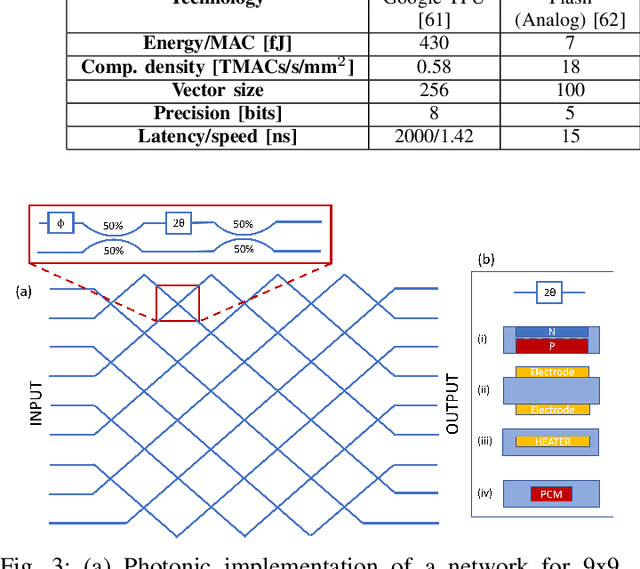
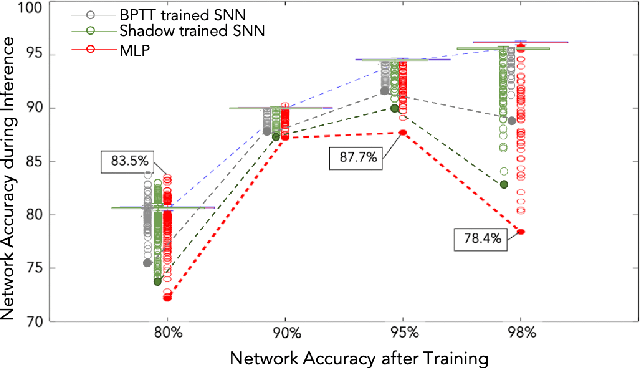
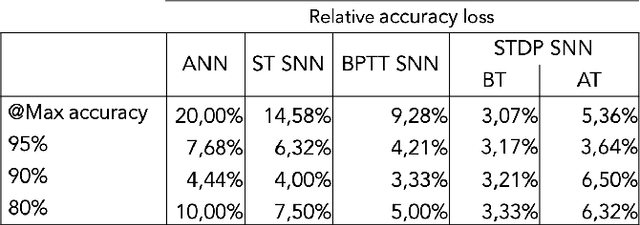

Abstract:The field of neuromorphic computing has been rapidly evolving in recent years, with an increasing focus on hardware design and reliability. This special session paper provides an overview of the recent developments in neuromorphic computing, focusing on hardware design and reliability. We first review the traditional CMOS-based approaches to neuromorphic hardware design and identify the challenges related to scalability, latency, and power consumption. We then investigate alternative approaches based on emerging technologies, specifically integrated photonics approaches within the NEUROPULS project. Finally, we examine the impact of device variability and aging on the reliability of neuromorphic hardware and present techniques for mitigating these effects. This review is intended to serve as a valuable resource for researchers and practitioners in neuromorphic computing.
Approximations in Deep Learning
Dec 08, 2022Abstract:The design and implementation of Deep Learning (DL) models is currently receiving a lot of attention from both industrials and academics. However, the computational workload associated with DL is often out of reach for low-power embedded devices and is still costly when run on datacenters. By relaxing the need for fully precise operations, Approximate Computing (AxC) substantially improves performance and energy efficiency. DL is extremely relevant in this context, since playing with the accuracy needed to do adequate computations will significantly enhance performance, while keeping the quality of results in a user-constrained range. This chapter will explore how AxC can improve the performance and energy efficiency of hardware accelerators in DL applications during inference and training.
Hitless memory-reconfigurable photonic reservoir computing architecture
Jul 13, 2022



Abstract:Reservoir computing is an analog bio-inspired computation model for efficiently processing time-dependent signals, the photonic implementations of which promise a combination of massive parallel information processing, low power consumption, and high speed operation. However, most implementations, especially for the case of time-delay reservoir computing (TDRC), require signal attenuation in the reservoir to achieve the desired system dynamics for a specific task, often resulting in large amounts of power being coupled outside of the system. We propose a novel TDRC architecture based on an asymmetric Mach-Zehnder interferometer (MZI) integrated in a resonant cavity which allows the memory capacity of the system to be tuned without the need for an optical attenuator block. Furthermore, this can be leveraged to find the optimal value for the specific components of the total memory capacity metric. We demonstrate this approach on the temporal bitwise XOR task and conclude that this way of memory capacity reconfiguration allows optimal performance to be achieved for memory-specific tasks.
Fast Exploration of Weight Sharing Opportunities for CNN Compression
Feb 02, 2021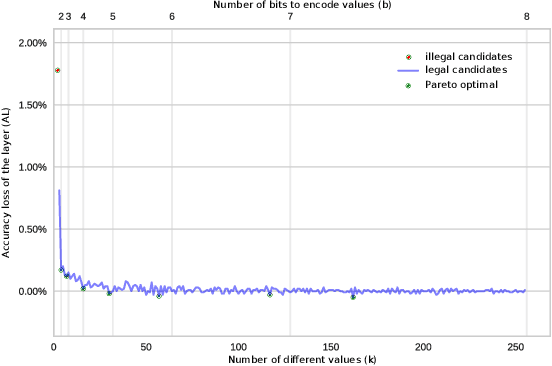
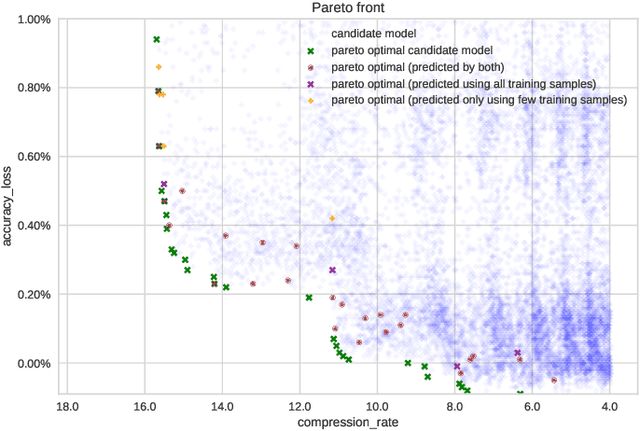
Abstract:The computational workload involved in Convolutional Neural Networks (CNNs) is typically out of reach for low-power embedded devices. There are a large number of approximation techniques to address this problem. These methods have hyper-parameters that need to be optimized for each CNNs using design space exploration (DSE). The goal of this work is to demonstrate that the DSE phase time can easily explode for state of the art CNN. We thus propose the use of an optimized exploration process to drastically reduce the exploration time without sacrificing the quality of the output.
 Add to Chrome
Add to Chrome Add to Firefox
Add to Firefox Add to Edge
Add to Edge